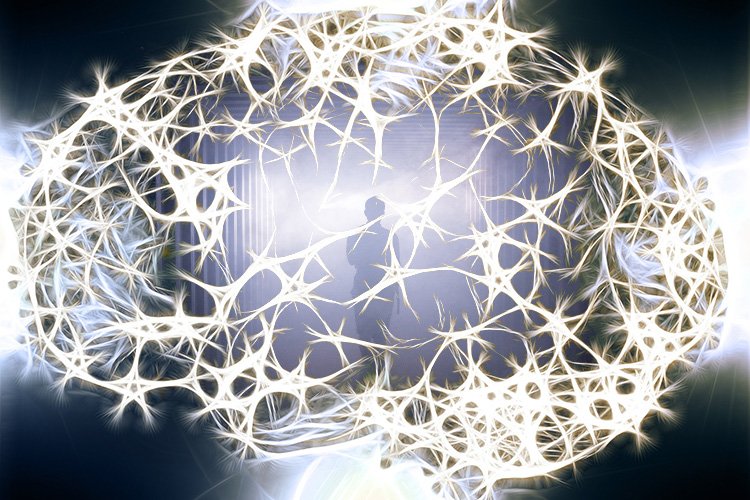A new study published in the Proceedings of the National Academy of Sciences has revealed early evidence of a surge of brain activity associated with consciousness-related brain activity near-death.
The research builds upon previous animal studies, demonstrating that similar gamma wave activity occurs in both animal and human brains following cardiac arrest.
Near-death experiences (NDE) have been documented throughout history and often involve strikingly similar descriptions, such as encounters with a bright light, visitations from departed loved ones, and auditory hallucinations.
These recent findings shed some light on the enigmatic nature of near-death experiences, suggesting a natural underlying mechanism to this widely reported phenomenon could exist.
“How vivid experience can emerge from a dysfunctional brain during the process of dying is a neuroscientific paradox,” said study co-author and professor of neuroscience at the University of Michigan Dr. George Mashour.
Dr. Jimo Borjigin, an associate professor in the Department of Molecular and Integrative Physiology and Neurology at the University of Michigan Medical School and study co-author, says her motivation to study the intersection of neuroscience and death stemmed from the surprising lack of scientific understanding regarding the brain during the dying process.
“My lab has been studying the dying brain since 2013 and was the first to discover the surge of gamma oscillations in the dying process in rats,” Dr. Borjigin told PsyPost. “I was shocked to realize that science-medicine knows little about the brain during the dying process.”
Dr. Borjing’s research on animals provided initial evidence of a surge in brain activity correlated with consciousness in dying human brains.
Building on these past insights, researchers analyzed electroencephalogram (EEG), and electrocardiogram (ECG) signals in the four comatose dying patients before and after the removal of ventilatory support.
Employing computational tools used in a previous study on dying animals, researchers found that upon the removal of ventilator support, two of the patients exhibited an increase in heart rate and a surge of gamma wave activity as global hypoxia intensified and patients’ cardiac conditions deteriorated.
Gamma wave oscillations are considered the fastest brain activity associated with consciousness and are believed to play a vital role in various cognitive processes, including perception, attention, memory, and consciousness.
Researchers also noted that the surge of gamma activity was detected in the “hot zone” of neural correlates of consciousness, located in the posterior cortical region of the brain.
The findings suggest that the surge of gamma activity observed in prior animal models may also occur in dying humans. Moreover, the results raise the possibility that patients who are clinically dead may still possess some level of covert consciousness that is not detectable.
“The high levels of organized brain activity remaining in the seemingly comatose patients suggest there is much to be learned about the brain of comatose patients, as they may not be beyond the help of future medicine,” Dr. Borjigin said.
And while findings indicate a surge of gamma activities in certain patients near death, researchers caution that two of the four patients did not exhibit the same increase in heart rate or gamma activity, highlighting the need for prudence in drawing broad conclusions due to the small sample size. None of the patients survived, so it is also impossible to ascertain whether they had any subjective near-death experiences.
However, the results do support the need for more extensive, multi-center studies involving intensive care unit patients who have undergone EEG monitoring and survived cardiac arrest.
Such studies could provide further insights and data to determine whether these bursts of gamma activity could indicate hidden consciousness near the time of death.
“This study lays the foundation for further investigation of covert consciousness during cardiac arrest, which may serve as a model system to explore mechanisms of human consciousness,” researchers wrote.
Ultimately, while the study’s limitations must be acknowledged, the potential implications are profound.
Further research in this area may pave the way for advancements in medical interventions for dying patients and a deeper understanding of the enigmatic phenomenon of near-death experiences.
Dr. Borjigin believes science is on the cusp of understanding the link between consciousness and near-death experiences, adding, “I am very optimistic that the neural basis of NDE will be fully elucidated in the near future.”
“Surge of neurophysiological coupling and connectivity of gamma oscillations in the dying human brain“, was authored by Gang Xua, Temenuzhka Mihaylova, Duan Li, Fangyun Tian, Peter M. Farrehi, Jack M. Parent, George A. Mashour, Michael M. Wang, and Jimo Borjigin and published in the Proceedings of the National Academy of Sciences.
Tim McMillan is a retired law enforcement executive, investigative reporter and co-founder of The Debrief. His writing typically focuses on defense, national security, the Intelligence Community and topics related to psychology. You can follow Tim on Twitter: @LtTimMcMillan. Tim can be reached by email: tim@thedebrief.org or through encrypted email: LtTimMcMillan@protonmail.com

